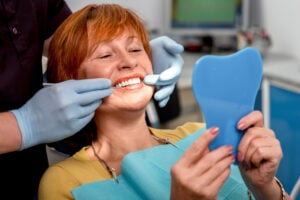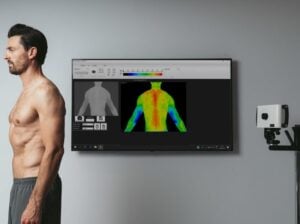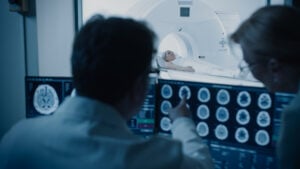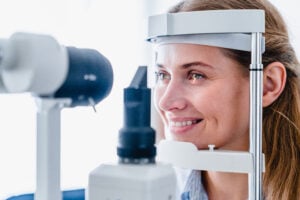Brace wars are brewing – invisible aligner subscription services are setting out to disrupt the traditional dental braces industry, and private dentists are fighting back. In the US, the 18,000-member American Association of Orthodontists issued a consumer alert and lodged complaints against an online aligner startup in 36 states, which has aggressively retaliated with several cease-and-desist letters to dentists critiquing their service.
What are the problems associated with traditional teeth alignment services?
Common reasons for getting braces include spaces between teeth, overbites, underbites, crossbites and overcrowding. Many adults and teens may not have had the opportunity as children to straighten their teeth, and do not want to wear metal braces, so an increasing number are turning to invisible aligner solutions such as Invisalign.
Invisalign is the gold standard clear aligner solution offered by dentists, having treated over 8 million smiles around the world. Patients can find Invisalign providers from the official website and see their level from Bronze to Diamond, reflecting the number of cases they have completed. While having an excellent reputation for being safe and secure, the biggest drawback for many patients is the cost. It runs into the thousands. Here’s where online aligner startups have spotted a market opportunity.
What does an online aligner subscription service offer?
Popular online aligner services such as Smile Direct Club, Orthly and Candid Co. offer clear aligners up to 60% less than the cost of traditional braces and Invisalign. If competing on price alone, they are clear winners.
These services provide at-home kits to take imprints of the teeth, and payment options can be set up with a couple of clicks online. Smile Direct Club also has several stores, known as SmileShops, where you can have a 3D scan created in person. 3D mouth simulations are then matched with a network of affiliated dentists who will design your treatment plan and send your aligners via mail. Aftercare and check-ups with a dentist happen remotely through a virtual consultation.
What are the advantages of visiting a dentist in-person for traditional braces or Invisalign treatment?
We got in touch with a leading London dentist, Dr Sunny Sihra, the owner of the Simply Teeth Clinic, who has run multiple practices in the London and Essex area over the last 20 years. Here’s what he had to say:
“Aligner subscription services should be used with caution as they can be quite troublesome. They take out the face-to-face consultation and check-ups that are fundamentally vital in ensuring all is well with a patient’s teeth before any aligner therapy is begun. It is advised, if not imperative, that the patient has regular check-ups with their dentist to ensure that everything is moving correctly and their aligners are working. If this is taken out of the equation, then it becomes quite difficult for us as dentists to know how they are getting on if we can’t physically see them or look at how their teeth and bite are moving.
We are not there to pick up on the little things that may go wrong, or other issues with the retainers which the patient may not be aware of. This could cause certain complications during the treatment, and could potentially promote orthodontic problems if the teeth are not inspected often during the treatment. Yes, it’s a cheaper alternative, but you do get what you pay for when you come and visit a professional.”Dr Sunny Sihra
Also, here are some more arguments for going the traditional dentist route:
Dental examination, filing and shaping – Your dentist or orthodontist will first perform a thorough dental check-up with X-rays to ensure there are no problems that require attention before making imprints. Sometimes teeth need to be filed and shaped before they can be ready for orthodontic treatment.
3D scans in the clinic – Dental imprints are made in-person using an electronic 3D scanning device by a certified dental technician or nurse. Sometimes a repeat scan is required to ensure all angles around the teeth are captured.
Ensure a good fit – When the braces arrive, they are applied by the dentist or orthodontist to ensure a secure fit. If there are any issues, these are addressed between the dental provider and the aligner company.
A personalised treatment plan – Based on the degree of alignment required, the dentist will prepare a customised treatment plan for you, including routine check-ups, shifting or tightening metal braces or taking new imprints for clear aligners.
Adjustments during teeth shifting – Teeth do not always shift in real life as predicted on computer models. Regular check-ups and adjustments will ensure that your aligners are personalised to your teeth and biological mouth structure. Predictive computer models are helpful simulation tools, but they are not 100% reflective of the actual teeth movement journey.
Avoid complications with regular check-ups – During routine check-ups, the dentist can ensure there are no complications, such as a changed bite, pressure, bleeding, ulcers, shrinking gums or jawbone, or even lost teeth.
If complications occur in between your scheduled visits, your dentist is familiar with your medical history and treatment plan, has your X-rays on hand, is available for emergency consultation and can quickly act to prevent further complications.
Demand for Orthodontic treatment is set to continue rising amongst adults and teens, and we expect to see continued access and service innovation in the invisible Orthodontics market. Competition can be healthy, and the ultimate judge will be the voice of the patient.
What are your experiences with braces and which option would you prefer? Leave a comment below.














